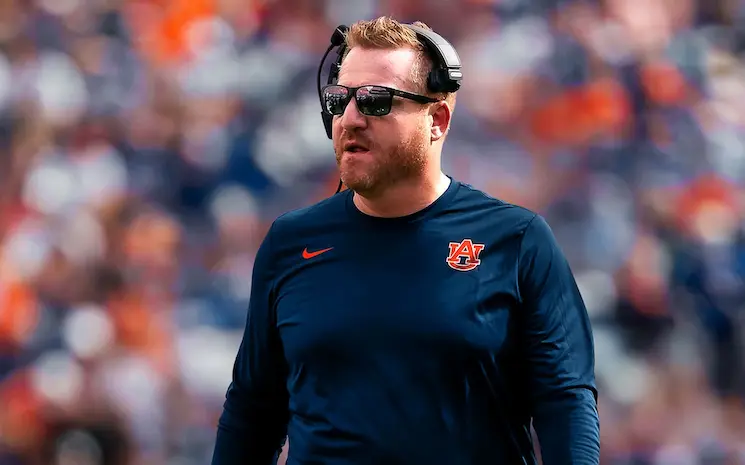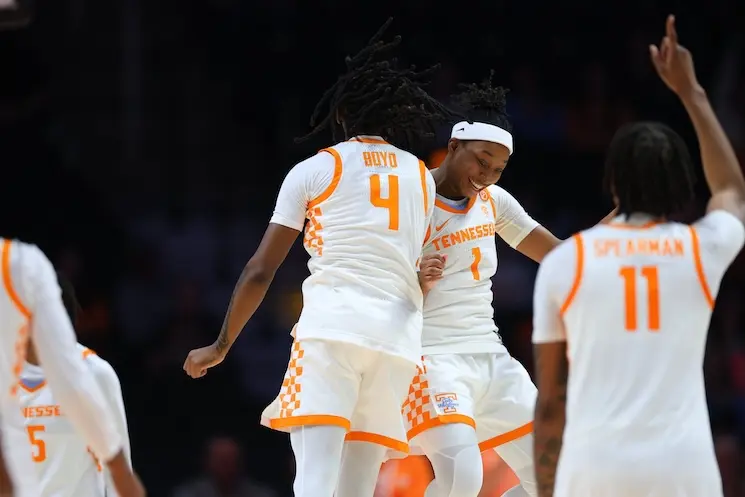
2018 Record: 2-10 overall, 1-8 Sun Belt
Head Coach: Shawn Elliot, 3rd year (9-15 overall)
Location: Atlanta, Georgia
Leading Returning Passer: Dan Ellington (Sr.) — 174-of-292, 2,119 yards 12 TDs, 5 INTs
Leading Returning Rusher: Dan Ellington (Sr.) — 159 carries, 625 yards, 5 TDs
Leading Receiver: Cornelius McCoy (So.) — 35 receptions, 495 yards, 1 TD
Leading Tackler: Ed Curney (RS Sr.) — 81 tackles, 4.5 TFL, 1 sack, 1 FR
Total Offense Rank: 90th (378.2)
Passing Offense Rank: 92nd (206.8)
Rushing Offense Rank: 62nd (171.4)
Scoring Offense Rank: 104th (23.9)
Total Defense Rank: 125th (489.5)
Passing Defense Rank: 80th (238.5)
Rushing Defense Rank: 124th (251.0)
Scoring Defense Rank: 122nd (37.4)
Tennessee opens up their 2019 season on Saturday when they play host to Georgia State. The Panthers return a lot of their roster from the previous season, but that’s a roster that went an abysmal 2-10 after going 7-5 in 2017, head coach Shawn Elliot’s first season at the helm of the team.
Georgia State returns a lot of starters and key pieces from their 2018 roster this season. According to Phil Steele’s Experience Chart, the Vols are No. 21 in the country in terms of total experience, but Georgia State is right behind them at No. 22. The Panthers return 82.8 percent of their lettermen from last year, 81 percent of their total offensive yards, and 78.2 percent of their tackles from 2018.
The Panthers will look to play spoiler against the Vols on Saturday, but the odds are stacked against them.
Here’s a look at what Georgia State brings to Knoxville on Saturday.

Offense
Georgia State’s offensive success begins and ends with quarterback Dan Ellington. The senior quarterback led the Panthers in passing yards and rushing yards in 2018, accumulating close to 3,000 yards of total offense. The former JUCO prospect earned an honorable mention for the All-Sun Belt team at season’s end last year.
Ellington did a good job taking care of the football last season, throwing just five interceptions on 292 pass attempts. His 625 rushing yards weren’t the most efficient (averaging 3.9 yards a carry), but he eclipsed the 50-yard rushing mark in seven of his 11 games last season.
But besides Ellington, what does Georgia State offer?
The dual running back threat of Tra Barnett and Seth Paige will be a duo to keep an eye on. Barnett rushed for 551 yards and seven touchdowns on a 5.1 yard per carry average, and Paige accumulated 341 yards and four scores on just 62 carries, giving him a 5.5 yard per attempt average. The Panthers boast six scholarship running backs, and all of them have a good mix of speed and versatility. Barnett also caught 14 passes, and both Paige and Destin Coates were used in the passing game as well.
Speaking of pass catchers, a walk-on could be a name to watch out for.
Terrance Dixon is a walk-on receiver for Georgia State who has impressed in fall camp. He’s squarely in the mix in the receiver rotation, and he could be second or third fiddle in the passing game. The leading option in the receiving corps is Cornelius McCoy, and Devin Gentry, Sam Pinckney, and Jonathan Ifedi will also see time. Pinckney is a 6-foot-4 freshman who towers over the rest of the projected starters. Dixon is just 5-foot-7, and McCoy and Gentry are both also under 6-feet tall. Tight end Roger Carter looks to be healthy and could be ready to make some plays after missing a couple games last season.
But as good as Georgia State is at the skill positions, their success will depend on what happens up front.
The left side of the Panthers’ line is made up of All-Sun Belt caliber players, while the right side looks to be testing out some youth. Malik Sumter is the projected starter at center, and he’s a redshirt sophomore — though he’s a very talented player and played for Dutch Fork High School, the same high school current Vol Bryce Thompson attended and current 2020 commit Jalin Hyatt is at. The Panthers are projected to start another redshirt sophomore at guard and a redshirt freshman at right tackle.
A season ago, the Panthers’ offensive line was inconsistent, allowing 25 sacks and 74 tackles for loss on the season. If Georgia State’s O-line can’t set up protection well and isn’t stopping defenders from getting to the running backs, they won’t find much success.
Defense
Defensively, Georgia State was a mess last season. As a team, they intercepted just six passes all year and finished tied with Baylor and USC for the second-fewest total turnovers forced in college football with just 10. Not only that, but the Panthers allowed 40 or more points in five of their 12 games and let opponents drop at least 34 points in all but two of their games last season.
Remember how bad Tennessee’s run defense was a couple years ago? That’s how bad Georgia State’s run defense was last season. The Panthers gave up over 3,000 total yards rushing to opponents on the season, and they allowed 30 rushing touchdowns. There were only four times all season that Georgia State held an opponent to under 200 yards rushing in a game. Teams averaged 6.6 yards per carry against the Panthers last season.
The good news for Georgia State is that a lot of those woes were because they played a lot of young players last season, and now those players are a year older and stronger. The bad news is, it may not matter much.
None of Georgia State’s defensive linemen weigh over 290 pounds, and their top returning linebacker, Ed Curney, is just 5-foot-11, 220 pounds. The Panthers utilize a 3-4 defensive system just like Tennessee, but they don’t have the size the Vols do in their front seven.
Georgia State’s secondary is in a similar situation to Tennessee’s. The Panthers boast a pretty experienced group of defensive backs that are led by a grizzled veteran safety and two sophomore cornerbacks. But still, this is a group that last year couldn’t pick off many passes and allowed 26 passing touchdowns on the year. Five different teams totaled 250 passing yards or more against Georgia State last season, and that’s even with all the massive amounts of rushing yards the Panthers let up, too.
Special Teams
Brandon Wright is a Ray Guy Award candidate as a punter, and he handles kicking duties for the Panthers, too. The redshirt senior is a former walk-on and was named a First Team All-Sun Belt performer last season and was a semifinalist for the Ray Guy Award. He finished third in the entire FBS in punting average (48.2 yards) and broke the Sun Belt Conference record for best punting average in a season. Of his 51 punts last season, 24 traveled at least 50 yards.
As a kicker, Wright isn’t quite as good, but he’s still more than serviceable. He was 7-of-11 on field goal attempts last season, and he was 27-of-28 on PATs. He’s 20-of-36 in his career on field goal attempts.
Penny Hart was a dangerous return man for Georgia State last season, but he’s no longer with the team and is with the Indianapolis Colts in the NFL. The Panthers will likely turn to the aforementioned Cornelius McCoy and also Quavian White to return kicks. If not those two, expect to see some smaller speedster like a Terrance Dixon out there.



